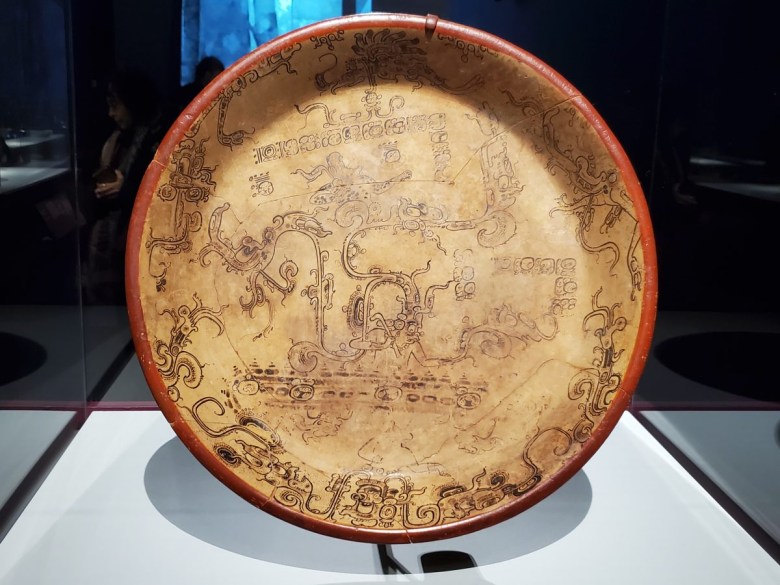At a current preview of The Metropolitan Museum of Art’s exhibition Life of the Gods: Divinity in Maya Artwork, people marveled quietly at substantial relief stoneworks and painted ceramic vessels excavated from lost metropolitan areas deserted all through the Traditional Maya collapse. The galleries have been softly lit if not totally dark — opening the flooring for the centuries-previous will work to converse for on their own.
The Met’s new show, structured in collaboration with Fort Worth’s Kimbell Artwork Museum, features dozens of large- and little-scale sculptures documenting the histories and existence levels of numerous Maya deities throughout the Vintage time period (250–900 CE). With both of those the all-natural decay and intentional destruction of almost all Maya texts, ancient Maya spirituality is deciphered and analyzed mainly by these valuable objects. Amid the vessels and ornaments in the exhibition are some inscribed or painted with glyphs and representational imagery of equal detail and good quality to that of the surviving Maya codices.
“Many of the books that existed in the Traditional interval were most likely wrecked by neglect hundreds of years right before Bishop Diego de Landa’s time,” exhibition co-curator Oswaldo Chinchilla advised Hyperallergic. “The weather in the Maya area is not conducive to the preservation of organic supplies specifically. But these objects on display were originating from metropolitan areas in ruins. The Spaniards weren’t invading these ruins, so that’s probably how these sculptures and architectural structures had been preserved.”


The Fulfilled has classified the exhibition into 7 key sections: Creations, Working day, Evening, Rain, Maize, Information, and Patron Gods. The Creations area ushers readers again to the beginning of the globe via the lens of Maya archiving. At the exhibition’s entrance, a squared ceramic vessel with slip-painted imagery and glyphs depicts 11 deities convening on August 11, 3114 BCE, or the working day the planet came into existence, according to Maya heritage.
The exhibition then prospects visitors by the Day and Night time sections, highlighting how astrological symbolism and regional fauna are woven into the identities of Maya deities. Like many other spiritual methods, the sunlight and its connected god, K’inich, ended up linked with lifetime-supplying forces, while the moon goddess was represented as a younger female, broadly symbolic of replica and textile weaving. Each the exhibition textual content and the push release indicate that as nocturnal predators frequently found throughout Central The us, jaguars have been regularly represented in nighttime deities that were being stated to have experienced “aggressive, warlike personalities.” A lot of objects from these sections are stone reduction sculptures, painted and inscribed ceramic vessels, or inscribed jade, obsidian, and seashells.


The Rain and Maize sections illuminate the connection involving the Maya folks and the deities of organic resources. The maize god in distinct was a massive fixation for Maya artists — several renderings of his start, existence, and demise are on display, indicating his value and reverence as corn was a important staple in the Maya food plan and overall economy.

The Understanding and the Patron Gods sections depict Maya artists as recognized members of the Maya nobility, tasked with portraying the interactions in between the ancient ruling course and Maya deities. It is noteworthy that 4 of the exhibition’s is effective have legible signatures from contributing artists, together with K’in Lakam Chahk and Jun Nat Omootz.

“Archaeological facts indicates that these artists were being associates of the royal courts, creating perform for the royal patrons and kings,” Chinchilla explained to Hyperallergic. “So, in some websites archaeologists have positioned residences that were being almost certainly occupied by scribes and artists, often really close to the royal palaces.” He added that the scientists identified applications including conch shell ink pots containing several chambers.
“Some of these have the continues to be of the pigments that they had been utilizing,” Chinchilla continued. “Small hatchets ended up located for carving, as properly, and mortars and pestles for grinding down pigments.”

The exhibition incorporates a film component documenting a religiously substantial performance named the “Dance of the Macaws.” A resilient tradition withstanding the Spanish Inquisition, the dance originated in Santa Cruz, within just the Verapaz province of Guatemala. The individuals, made up of the young members of the local community, wear ornate scarlet robes alongside with adorned masks with hooked beaks, emulating the appearance of the macaw. In accordance to the description presented by The Met, the dance illustrates the “origins of social establishments and the rationale for religious rituals committed to the gods of the earth and the mountains.”
A clip of the video is displayed throughout the exhibition in the Patron Gods section, but the full online video is out there on The Met’s YouTube channel. The exhibition runs by means of April 2.

Offered how intensive the exhibition is in regards to detailing Maya historical past, it was disappointing that only the introduction text at the entrance, and not particular person wall labels, was out there in Spanish. Spanish-speaking guests were invited to scan a QR code to entry all of the exhibition texts and object descriptions in Spanish via a 106-webpage PDF.
That mentioned, staying in a position to see Maya artwork found out from the ruins of abandoned cities was definitely humbling. The confidence and treatment channeled via every single inscription, painted line, and sculpted characteristic speaks to how artmaking was a divine act for Maya artists. Whilst The Achieved upholds the Stelae and large, limestone throne as the stars of the exhibition, I was most charmed by the smaller sized, detail-oriented sculptures and ornaments — most specifically, this Maya Blue ceramic crocodile that doubled as a whistle and a rattle. Next in line was the Conch Shell Trumpet, mainly because I was blown away by its decisive, intricate carvings upon this sort of an unforgiving, dimensional floor.


